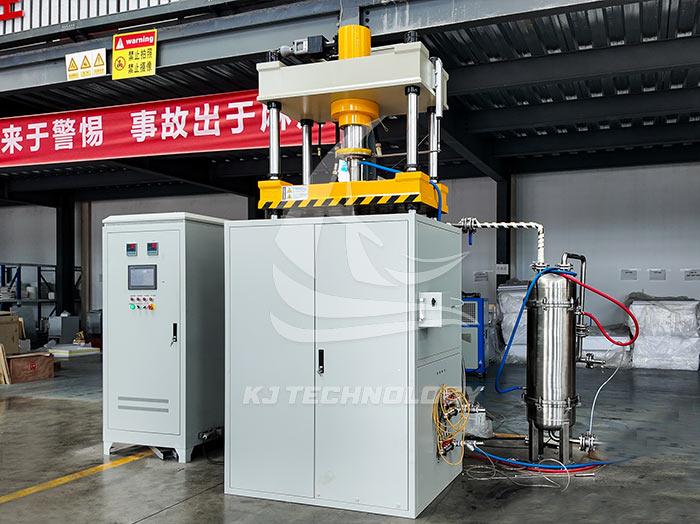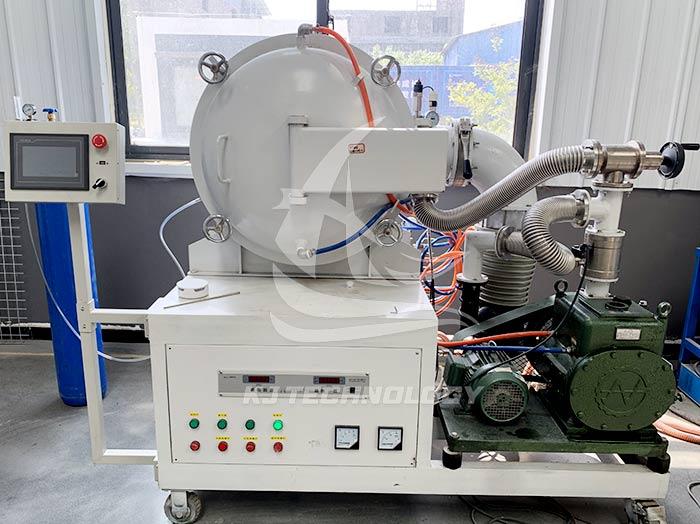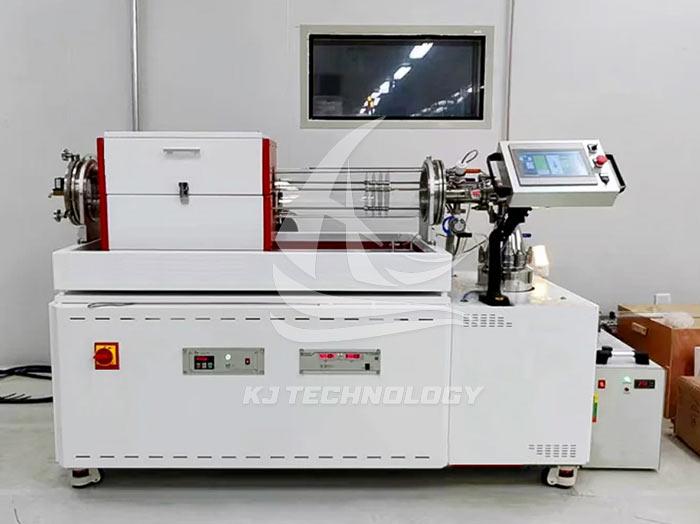Working principle of heat treatment vacuum furnace
 09-10-2025 Author: KJ technology
09-10-2025 Author: KJ technology
The heat treatment vacuum furnace creates an oxygen free or low oxygen environment in a closed furnace chamber by combining vacuum technology with heat treatment processes, achieving high-performance processing of materials. The core principles can be summarized into three modules: vacuum environment control, heating and heat transfer mechanism, and process control. The following will explain them from three aspects: technical principles, key systems, and typical process flow:
1. Technical principle: How vacuum environment changes heat treatment process
Inhibit oxidation and decarbonization
In conventional heat treatment, metals react with oxygen at high temperatures to form oxide films (such as FeO, Fe∝ O ₄), resulting in a decrease in surface hardness and an increase in brittleness; Carbon steel will also lose its wear resistance due to decarburization (reduction in surface carbon content). The vacuum furnace evacuates to 10 ⁻²~10 ⁻⁵ Pa (equivalent to one billionth to one millionth of atmospheric pressure), causing the oxygen partial pressure to be extremely low and the reaction equilibrium to shift in the opposite direction, thereby completely eliminating oxidation and decarburization. For example, after vacuum quenching, the surface of high-speed steel cutting tools is free of oxygen scale, and the sharpness of the cutting edge is improved.
Degassing and purification effects
Residual gases such as hydrogen, nitrogen, and oxygen inside the material can form pores or cracks at high temperatures (such as pinholes in aluminum alloy castings). In a vacuum environment, the partial pressure and solubility of these gases decrease, and they diffuse and accumulate on the surface, which is then pumped out by a vacuum pump to achieve internal purification. Experiments have shown that the hydrogen content in titanium alloys melted in vacuum can be controlled and is much lower than that in conventional melting.
Surface activity enhancement
The vacuum environment removes impurities and oxide films adsorbed on the surface, exposing metal atoms directly and significantly improving surface energy. This characteristic is particularly important in diffusion welding, brazing and other processes, as it can reduce welding temperature and improve joint strength.
2. Key system: How to achieve precise control of vacuum furnace
Vacuum system - the core of building anaerobic environment
Vacuum pump group: usually composed of a mechanical pump (pre evacuated to below 10Pa) and a diffusion pump/molecular pump (further evacuated to high vacuum). For example, a certain model of vacuum furnace uses a three-stage pumping system consisting of a rotary vane pump, Roots pump, and diffusion pump.
Vacuum measurement: Real time monitoring of pressure through resistance and ionization gauges.
Sealing structure: The furnace door is sealed with a double-layer O-ring, and the water-cooled electrode is isolated from the furnace body through a ceramic insulation sleeve. The thermocouple outlet hole is sealed with a corrugated tube to ensure air leakage rate.
Heating system - the key to precise temperature control
Heating element: Select materials according to temperature requirements:
Graphite heater: suitable for high-temperature treatment at 1600-2200 ℃ (such as silicon carbide ceramic sintering), but it needs to be used under inert gas protection to prevent oxidation.
Molybdenum heating wire: used in scenarios ranging from 1200 to 1800 ℃ (such as high-temperature alloy quenching), requiring a vacuum or hydrogen atmosphere.
Temperature control: PID algorithm is used to adjust the heating power, combined with multi-point temperature measurement (thermocouples are arranged at the front, middle, and rear ends of the furnace) to achieve temperature uniformity within ± 5 ℃.
Cooling system - the 'brake' that controls organizational transformation
Gas quenching: Inject high-pressure nitrogen gas into the furnace cavity and accelerate cooling through airflow convection, suitable for materials that require martensitic transformation such as high-speed steel and mold steel. For example, H13 mold steel has low hardness and deformation after gas quenching.
Oil quenching: Immerse the workpiece in vacuum quenching oil in a vacuum state, with a slow cooling rate but low stress, suitable for complex shaped parts.
Water quenching: Only used for extremely thin workpieces or special alloys, strict control of water temperature is required to prevent cracking.
3. Typical process flow: the entire process from loading to discharging from the furnace
Taking vacuum quenching as an example, the complete process is as follows:
Loading and pre vacuuming
Place the workpiece (such as bearing rings) on the fixture inside the furnace, close the furnace door and lock it.
Start the mechanical pump and pump the furnace chamber pressure from atmospheric pressure to below 10Pa (about 5 minutes) to remove most of the air.
High vacuum processing
Switch to the diffusion pump and continue pumping to 10 ⁻³~10 ⁻⁴ Pa (about 20 minutes). At this time, the oxygen partial pressure is extremely low, which can effectively inhibit oxidation.
Maintain a high vacuum state for 10-30 minutes to fully desorb the gas adsorbed on the surface of the workpiece.
Heating and insulation
Start the heating system and heat up according to the preset curve (such as high-speed steel quenching: preheating at 650 ℃ for 30 minutes → quenching and heating at 1050 ℃ for 60 minutes).
During the insulation stage, maintain a temperature fluctuation of ± 5 ℃ to ensure uniform tissue transformation.
Vacuum cooling or inflation quenching
Vacuum Slow Cooling: Suitable for materials that require retention of austenite structure (such as certain stainless steels), naturally cooled to room temperature by radiation.
Gas quenching: Fill high-pressure nitrogen gas at around 850 ℃, quickly pass through the critical temperature of martensitic transformation, and obtain a high hardness structure.
Recharge and discharge
After quenching is completed, dry air is filled into the furnace chamber to atmospheric pressure, and the furnace door is opened to remove the workpiece.
If subsequent tempering treatment is required, it can be directly carried out in a vacuum furnace to avoid secondary oxidation.
4. Technical advantage: Why vacuum furnace has become the preferred choice for high-end heat treatment
Material performance improvement: After vacuum treatment, the surface roughness of the workpiece is reduced and the fatigue life is increased.
Process stability: Automated control system reduces human error and controls hardness deviation between batches.
Environmental protection and energy conservation: No combustion process, higher thermal efficiency, and no exhaust emissions.
Adapting to complex processes: It can achieve various processes such as vacuum brazing, vacuum annealing, and vacuum carburizing, meeting the needs of high-end fields such as aerospace and semiconductors.








